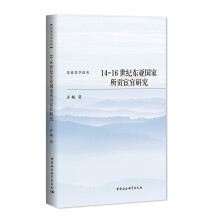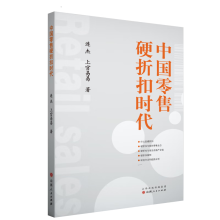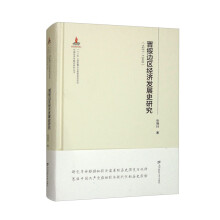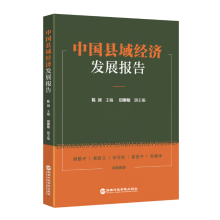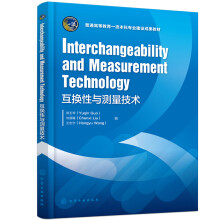Chapter 1 Introduction 001
1.1 Interchangeability and Tolerance 002
1.2 Standards and Standardization 004
1.3 Series of Preferred Numbers 005
1.4 Overview of Geometric Parameters Detection 007
1.5 Properties and Objectives of the Course 009
Questions and Exercises 010
Definitions for Key Terms 011
Chapter 2 Limits and Fits of Shaft and Hole 012
2.1 Introduction 013
2.2 Basic Terms and Definitions 014
2.2.1 Terms and Definitions of Size 014
2.2.2 Terms and Definitions of Deviation and Tolerance 015
2.2.3 Terms and Definitions of Fit 018
2.2.4 Fit System 020
2.3 Limits and Fits of Common Size 021
2.3.1 Standard Tolerance Series 021
2.3.2 Fundamental Deviation Series 023
2.3.3 Indication of the Limits and Fits on Engineering Drawing 031
2.3.4 Recommended Tolerance Zones of Hole/Shaft and Fits 031
2.4 Limits and Fits of Large Size Hole/Shaft 034
2.5 General Tolerance for Linear Sizes without Individual Tolerance Indication 036
2.6 Size Accuracy Design 037
2.6.1 Basic Principles and Methods 037
2.6.2 Selection of Fit System 037
2.6.3 Selection of Standard Tolerance Grade 040
2.6.4 Selection of Fit Type 041
2.6.5 Example for Size Accuracy Design 046
Project Ⅰ:Size Measurement 048
Questions and Exercises 049
Definitions for Key Terms 051
Chapter 3 Geometrical Tolerance and Error Measurement 053
3.1 Introduction 054
3.2 Geometrical Features and Characteristics of Geometrical Tolerances 054
3.2.1 Geometrical Features and Their Classifications 054
3.2.2 Characteristics and Symbols of Geometrical Tolerances 056
3.3 Indication of Geometrical Tolerance on Engineering Drawing 057
3.3.1 Geometrical Tolerance Frame and Datum Symbol 057
3.3.2 Indication of Measured Features 058
3.3.3 Indication of Datum 060
3.3.4 Simplified Indication Methods 061
3.4 Geometrical Tolerance Zone 062
3.4.1 Fundamental Characteristics of Geometrical Tolerance Zone 062
3.4.2 Datum 063
3.4.3 Form Tolerance Zone 066
3.4.4 Orientation Tolerance Zone 068
3.4.5 Location Tolerance Zone 073
3.4.6 Profile Tolerance Zone 077
3.4.7 Runout Tolerance Zone 079
3.5 Tolerance Principles 081
3.5.1 Terms and Definitions about Tolerance Principle 082
3.5.2 Independence Principle 085
3.5.3 Envelope Requirement 087
3.5.4 Maximum Material Requirement 089
3.5.5 Least Material Requirement 096
3.6 Geometrical Accuracy Design 099
3.6.1 Selection of Geometrical Tolerance Characteristics and Datum 100
3.6.2 Selection of Tolerance Principle 101
3.6.3 Selection of Geometrical Tolerance Value 103
3.6.4 Example for Geometrical Accuracy Design 107
ProjectⅡ:Measurement of Geometrical Deviations 109
Questions and Exercises 110
Definitions for Key Terms 113
Chapter 4 Surface Roughness and Its Measurement 116
4.1 Introduction 117
4.1.1 Definition of Surface Roughness Profile 117
4.1.2 Effect of Surface Roughness on Performance and Fit Quality 118
4.2 Evaluation Parameters of Surface Roughness 120
4.2.1 Basic Terms and Definitions 120
4.2.2 Definitions of Evaluation Parameters 122
4.3 Selection of Surface Roughness Parameter and Its Value 124
4.4 Indications of Surface Texture Requirements on Engineering Drawing 128
4.5 Measurement of Surface Roughness 133
Project Ⅲ:Measurement of Maximum Height of Profile 138
Questions and Exercises 138
Definitions for Key Terms 139
Chapter 5 Tolerance and Measurement of Involute Cylindrical Gear 141
5.1 Introduction 142
5.2 Operating Requirements for Gear Drive 143
5.3 Main Influence Factors on Gear Drive Error 144
5.4 Evaluation Parameters of Involute Cylindrical Gear and Their Measurement 149
5.4.1 Evaluation Parameters of Transfer Motion Accuracy and Their Measurement 149
5.4.2 Evaluation Parameters of Drive Stability and Their Measurement 156
5.4.3 Evaluation Parameters of Load Distribution Uniformity and Their Measurement 159
5.4.4 Evaluation Parameters of Backlash and Their Measurement 162
5.5 Accuracy Design of Involute Cylindrical Gear 165
5.5.1 Accuracy Grades and Indication on Engineering Drawing 165
5.5.2 Limit Deviations of Backlash Parameters 166
5.5.3 Tolerance of Gear Blank 169
5.5.4 Tolerance of Gear Pair 170
Project Ⅳ:Measurement of Involute Cylindrical Gear 172
Questions and Exercises 173
Definitions for Key Terms 174
Chapter 6 Tolerance and Measurement of Typical Parts 176
6.1 Tolerance and Fit of Rolling Bearing 177
6.1.1 Tolerance Grades of Rolling Bearing and Application 177
6.1.2 Tolerance Zone and Characteristic of Rolling Bearing 178
6.1.3 Rolling Bearing Fit 179
6.2 Tolerance,Fit and Measurement of Key and Spline 184
6.2.1 Tolerance,Fit and Measurement of Flat Key Connection 184
6.2.2 Tolerance,Fit and Measurement of Rectangle Spline Connection 189
6.3 Tolerance,Fit and Measurement of Common Thread 193
6.3.1 Basic Geometrical Parameters of Common Thread 194
6.3.2 Tolerance and Fit of Common Thread 194
6.3.3 Measurement of Common Thread 198
6.4 Tolerance,Fit and Measurement of Cone 199
6.4.1 Basic Terms of Cone Tolerance and Fit 200
6.4.2 Cone Tolerance Features and Their Selection 202
6.4.3 Measurement of Cone 203
Questions and Exercises 204
Definitions for Key Terms 205
References 207
展开



